
Filter News
Area of Research
News Type
News Topics
- (-) Advanced Reactors (12)
- (-) Artificial Intelligence (77)
- (-) Big Data (45)
- (-) Clean Water (16)
- (-) Cybersecurity (14)
- (-) Hydropower (6)
- (-) Isotopes (33)
- (-) Nanotechnology (17)
- (-) Physics (34)
- 3-D Printing/Advanced Manufacturing (56)
- Bioenergy (68)
- Biology (80)
- Biomedical (42)
- Biotechnology (25)
- Buildings (30)
- Chemical Sciences (35)
- Composites (11)
- Computer Science (111)
- Coronavirus (19)
- Critical Materials (5)
- Education (2)
- Emergency (3)
- Energy Storage (32)
- Environment (116)
- Exascale Computing (51)
- Fossil Energy (6)
- Frontier (44)
- Fusion (38)
- Grid (32)
- High-Performance Computing (81)
- ITER (4)
- Machine Learning (37)
- Materials (51)
- Materials Science (55)
- Mathematics (8)
- Mercury (7)
- Microelectronics (3)
- Microscopy (23)
- Molten Salt (2)
- National Security (60)
- Neutron Science (82)
- Nuclear Energy (66)
- Partnerships (36)
- Polymers (9)
- Quantum Computing (35)
- Quantum Science (48)
- Security (16)
- Simulation (42)
- Software (1)
- Space Exploration (13)
- Statistics (2)
- Summit (40)
- Transportation (30)
Media Contacts
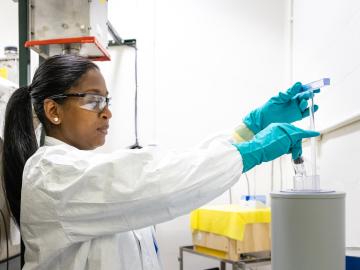
A series of new classes at Pellissippi State Community College will offer students a new career path — and a national laboratory a pipeline of workers who have the skills needed for its own rapidly growing programs.
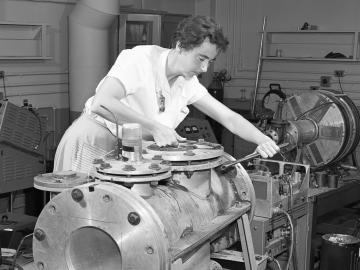
The old photos show her casually writing data in a logbook with stacks of lead bricks nearby, or sealing a vacuum chamber with a wrench. ORNL researcher Frances Pleasonton was instrumental in some of the earliest explorations of the properties of the neutron as the X-10 Site was finding its postwar footing as a research lab.
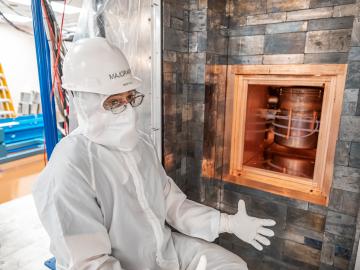
For nearly six years, the Majorana Demonstrator quietly listened to the universe. Nearly a mile underground at the Sanford Underground Research Facility, or SURF, in Lead, South Dakota, the experiment collected data that could answer one of the most perplexing questions in physics: Why is the universe filled with something instead of nothing?
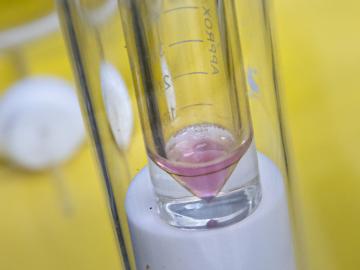
With larger, purer shipments on a more frequent basis, Oak Ridge National Laboratory is moving closer to routine production of promethium-147. That’s thanks in part to the application of some specific research performed a decade ago for a completely different project.

Millions of miles of pipelines and conduits across the United States make up an intricate network of waterways used for municipal, agricultural and industrial purposes.

The Earth System Grid Federation, a multi-agency initiative that gathers and distributes data for top-tier projections of the Earth’s climate, is preparing a series of upgrades.
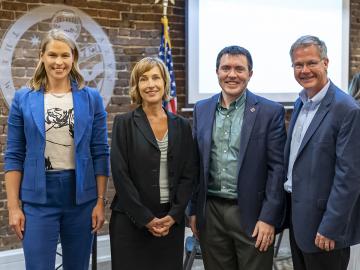
A crowd of investors and supporters turned out for last week’s Innovation Crossroads Showcase at the Knoxville Chamber as part of Innov865 Week. Sponsored by ORNL and the Tennessee Advanced Energy Business Council, the event celebrated deep-tech entrepreneurs and the Oak Ridge Corridor as a growing energy innovation hub for the nation.

ORNL has provided hydropower operators with new data to better prepare for extreme weather events and shifts in seasonal energy demands caused by climate change.
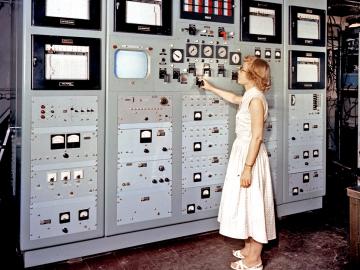
Oak Ridge National Laboratory physicist Elizabeth “Libby” Johnson (1921-1996), one of the world’s first nuclear reactor operators, standardized the field of criticality safety with peers from ORNL and Los Alamos National Laboratory.
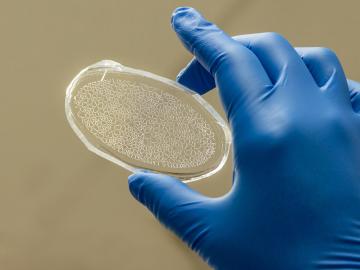
Scientists at ORNL have created a miniaturized environment to study the ecosystem around poplar tree roots for insights into plant health and soil carbon sequestration.


